Jalppajin Memil - Seochon Branch (잘빠진메밀 서촌)
3.5Km 2021-03-18
41-1, Jahamun-ro, Jongno-gu, Seoul, Korea
+82-70-4142-1214
This is a Korean cuisine located in Jongno-gu, Seoul. A restaurant that uses noodles made with 100% buckwheat directly by the chef. The best menu at this restaurant is dumpling hot pot.
Palais Gyeonghuigung (경희궁)
3.5Km 2021-07-21
55, Saemunan-ro, Jongno-gu, Seoul-si
+82-2-724-0274
A la fin de la période Joseon, Gyeonghuigung servait de palais secondaire pour le roi. Comme il se situe dans la partie ouest de Séoul, il
porte aussi le nom de 'Seogwol'. Le palais secondaire était le palais où le roi se déplaçait en cas d’urgence. De Injo à Cheoljong, environ dix rois de la dynastie Joseon sont restés à Gyeonghuigung. Ce palais qui a été construit en utilisant la géographie inclinée aux alentours de la montagne possède une beauté traditionnelle en
matière d'architecture et une grande signification historique. A une
certaine époque, sa réputation était telle qu'il y avait même un pont arqué le reliant au palais Deoksugung. Les bâtiments Sungjeongjeon et Jajeongjeon
sont pour l’audience royale du roi, tandis que les bâtiments Yungbokjeon et Hoesangjeonet
servaient à dormir. Au total, le palais comprenait 100 bâtiments.
Mais, lorsque le Japon envahit la Corée
en 1908, l’école Japonaise Gyeongseong s'est installée dans le palais, et une grande partie du palais a été nivelée ou déplacée. Actuellement, la porte d(entrée
de Gyeonghuigung, la Porte Heunghwamun est utilisée en tant que porte d’entrée principale de l’ hôtel Silla, et Sungjeongjeon est à l’Université Dongguk. L’école a déménagé dans un autre endroit tandis
que le Sungjeongjeon et quelques autres bâtiments ont été reconstruits.
Près du palais Gyeonghuigung se trouvent le Musée d’Histoire de Séoul, la rue Jeongdong, et la rue très active Jongno. Après avoir visité le palais Gyeonghuigung, vous pouvez traverser la rue Jeongdong et marcher jusqu’au palais Deoksugung. La rue avec un mur de pierres menant
au palais Deoksugung est considérée comme l'une des rues les plus élégantes de Séoul.
Seochon Guest House [Korea Quality] / 서촌 게스트하우스 [한국관광 품질인증]
3.5Km 2023-04-07
28-3, Jahamun-ro 7-gil, Jongno-gu, Seoul
+82-010-3345-9680
Seochon Guest House is located in Seochon, which is becoming a hot place for tourists in Seoul, and precisely on the road to Suseong Valley, whichis filled with interesting stores and is also well-known for Park Nosoo Art Gallery and the House of Yun Dong-ju (poet). Seochon Guest House is nicknamed ‘Jaeminangol (interesting village)’ after Baekseok’s poem ‘Yeowunangol’, with the aim of providing a visit full of interesting experiences. Passing through a garden and entering the main building, the unique charm of this hanok building, the staircase to get to the first floor from daecheong (main floored room), catches the eye of the visitors. In addition, the building is decorated with various stylish objects including paintings and Korean musical instruments. The terrace situated on the first floor offers an open view of the surrounding area including roof tiles of hanok structures and alleyways in Seochon. It is said that Korean novelist Yoon Hu-myeong also appreciated the structure of the guesthouse, saying, “It is an interesting place.” Built in the 1930s, the house, which has many storage places, was taken by the owner couple in spring 2014 as they were attracted by the house during their trip to Seochon. After the repair work, the ground floor of the house was opened for guests from January 2016, hoping that guests could share their daily experiences and stories with each other. The guestrooms and the main floored room on the ground floor are open to guests, with the exception of the first floor, which is used by the owner couple. The living room is equipped with books, a curved TV, and a table. The tasty meal, which is served in the kitchen, consists of rice and soup with six side dishes and is much loved by guests. The guesthouse offers a total of four rooms – Jae Room, which is the most Korean-style room; Mi Room, which has a combined style of a Korean-style room and Western-style room; Nan Room, which is an ideal room for meditation with a beautiful paper window; and Ahn Room, which is equipped with a veranda and a pretty flowerbed. Every room has its separate charm with various comfortable bedding to provide a quiet and cozy bedroom for guests in the middle of the city. Furthermore, the guesthouse holds a pansori (epic chant) performance twice a year. The owner started learning how to sing pansori to promote the Korean culture and tradition to foreigners. When a pansori performance is held, the owner offers traditional Korean snacks and drinks including sikhye (sweet rice punch), sujeonggwa (cinnamon punch), traditional sweets and cookies, and tteok (rice cakes) to visitors, tourists, and performers. Moreover, it provides cultural programs such as a Gukak (Korean classical music) experience, Korean traditional clothes experience, and making Korean food experience, as well as other activities with guests, such as trip to the city wall between Inwangsan Mountain and Bugaksan Mountain, and the Royal Palace Tour to Gyeongbokgung Palace, etc., as well as a trip to a traditional market.
Honbap Star (서촌막회센타)
3.5Km 2021-03-24
49, Jahamun-ro 1-gil, Jongno-gu, Seoul
+82-10-9018-6349
This is a raw fish restaurant known for its cost-effectiveness. This Korean dishes restaurant is located in Jongno-gu, Seoul. The representative menu is sliced raw small fish.
Podam (포담)
3.5Km 2021-03-22
11, Jahamun-ro, 9-gil, Jongno-gu, Seoul
+82-2-733-0831
A store featured in Korean gourmet programs. This Chinese (cuisine) restaurant is located in Jongno-gu, Seoul. The most famous menu is dim sum.
Gare culturelle de Séoul 284 (ancienne gare de Séoul) (문화역서울 284)
3.5Km 2023-04-26
426, Cheongpa-ro, Jung-gu, Seoul-si
+82-2-3407-3500
L’ancien bâtiment de la gare de Séoul a été conçu par Tsukamoto Yasushi, professeur à l’Université de Tokyo. La construction de la station a commencé en juin 1922 et a été complété en septembre 1925. Avant la construction du bâtiment, la gare de Séoul était seulement un bâtiment en bois à 2 étages (33 m²) appelé « l‘arrêt Namdaemun ». Il était situé entre la gare de Séoul actuelle et Yeomcheongyo et était un arrêt pour la ligne de train Gyeongin (Séoul-Incheon). Le nom de la station est devenu « station Gyeongseong » en octobre 1910 et quelques années plus tard, 3 lignes de trains supplémentaires ont été ouvertes (ligne Gyeongbu en 1904, ligne Gyeongui en 1905, et ligne Gyeongwon en 1914).
Le nouveau bâtiment à 2 étages (niveau inférieur 1 et 1 niveau supérieur) a été construit en bois et en brique avec une toiture en ardoise soutenue par une armature en fer. Le premier étage a été bâtit dans un style Renaissance et le second étage a été décoré avec des briques rouges et du granite.
Après que la Corée ait regagné son indépendance face à la colonisation japonaise, le gouvernement américain a pris le contrôle de la station Gyeongseong (1946) et en 1947, le nom est alors devenu « Gare de Séoul ».
Gimjinmoksam (김진목삼)
3.5Km 2021-03-23
51, Jahamun-ro, 1-gil, Jongno-gu, Seoul
+82-2-929-2929
This is a place where the staff directly grills pork that has been certified by Handon. This Korean dishes restaurant is located in Jongno-gu, Seoul. The representative menu is grilled pork shoulder.
Parc de l'histoire Seosomun (서소문역사공원)
3.5Km 2023-09-14
5, Chilpae-ro, Jung-gu, Seoul
+82-2-3396-5852
La zone de la porte Seosomun était auparavant un site de persécution durant le 19ème siècle qui a été transformé en parc. De nombreux catholique furent persécutés sur place faisant de ce site un site sacré pour les catholiques en Corée.
La porte Seosomun constitue un passage vers le marché Chilpae près de la porte Namdaemun.
Le 15 mai 1999 une tour commémorative fut inauguré au centre du parc pour commémorer les martyrs. En 2013, le district Jung-gu a également inauguré le Musée d'Histoire Seosumun.
Hojil (호질)
3.5Km 2021-03-20
15, Jahamun-ro, 9-gil, Jongno-gu, Seoul
+82-2-764-6822
A good restaurant to visit before and after the tour, being located near Gyeongbokgung Palace, one of the tourist attractions. This restaurant's signature menu is spicy sea snail salad. This Korean dishes restaurant is located in Jongno-gu, Seoul.
Velvet Moon (벨벳문)
3.5Km 2021-03-26
39, Jahamun-ro 5-gil, Jongno-gu, Seoul
+82-10-4028-9957
This coffee shop roasts coffee beans directly. This Korean dishes restaurant is located in Jongno-gu, Seoul. The most famous menu is espresso.
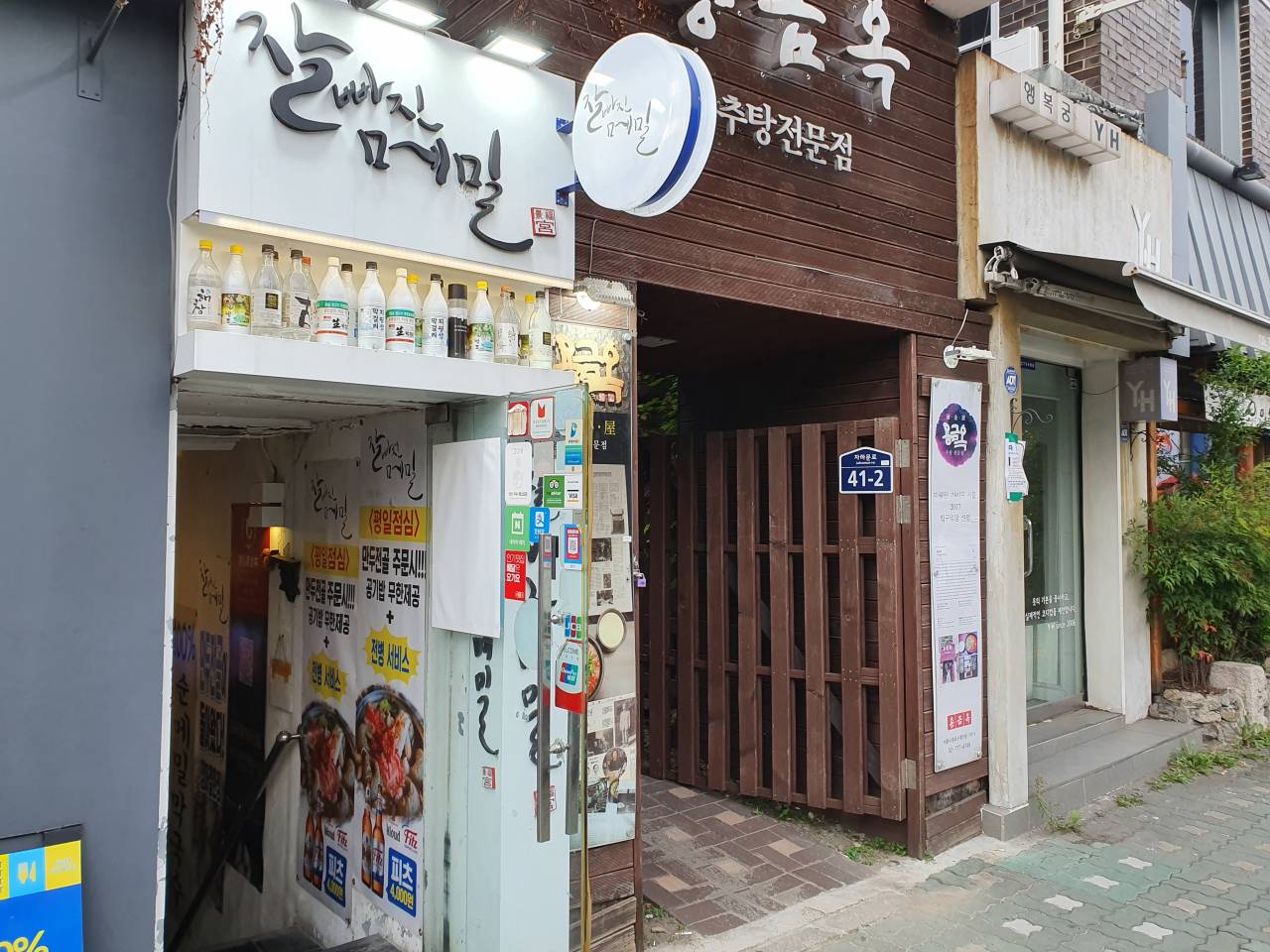
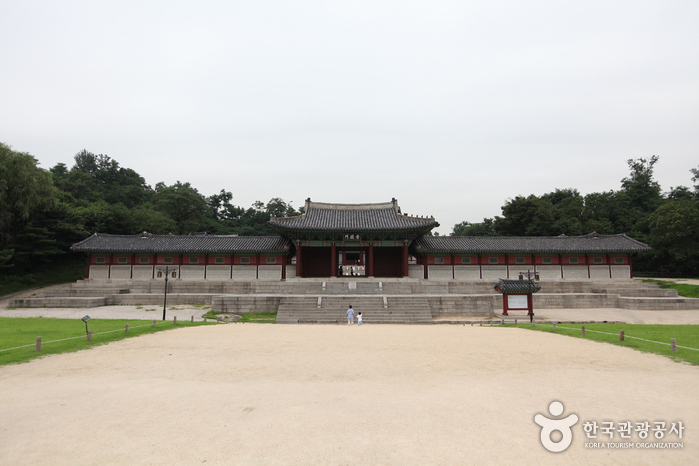
![Seochon Guest House [Korea Quality] / 서촌 게스트하우스 [한국관광 품질인증]](http://tong.visitkorea.or.kr/cms/resource/41/2447241_image2_1.jpg)
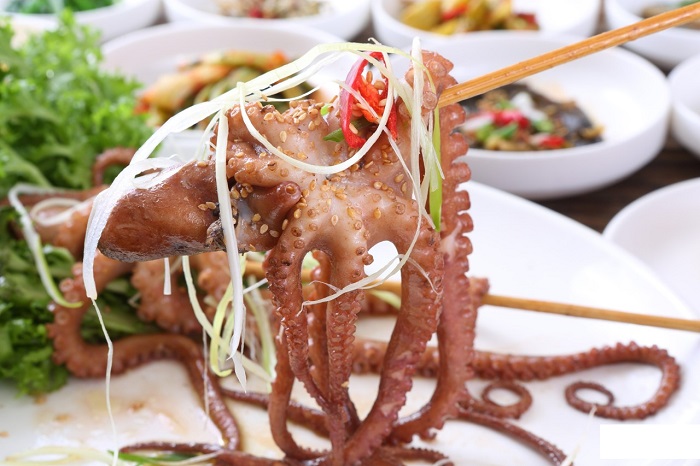
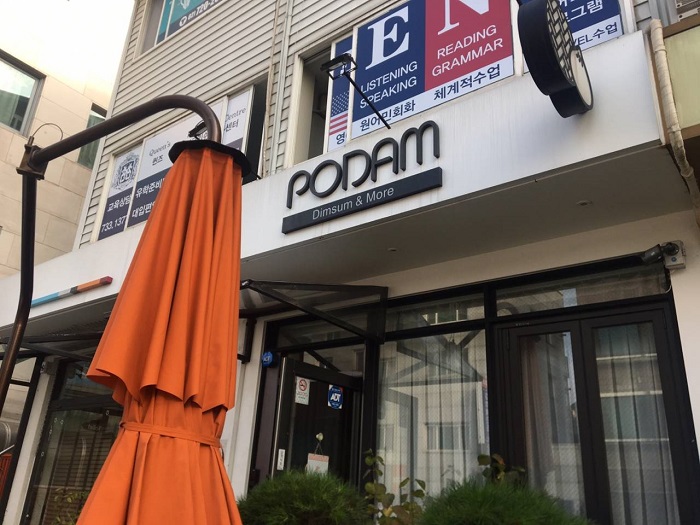
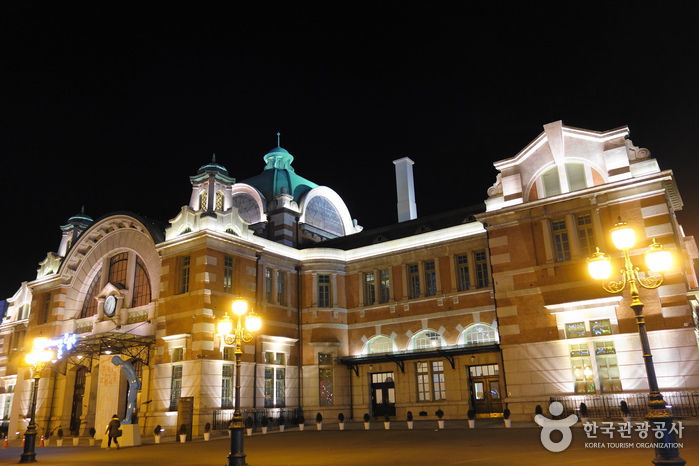
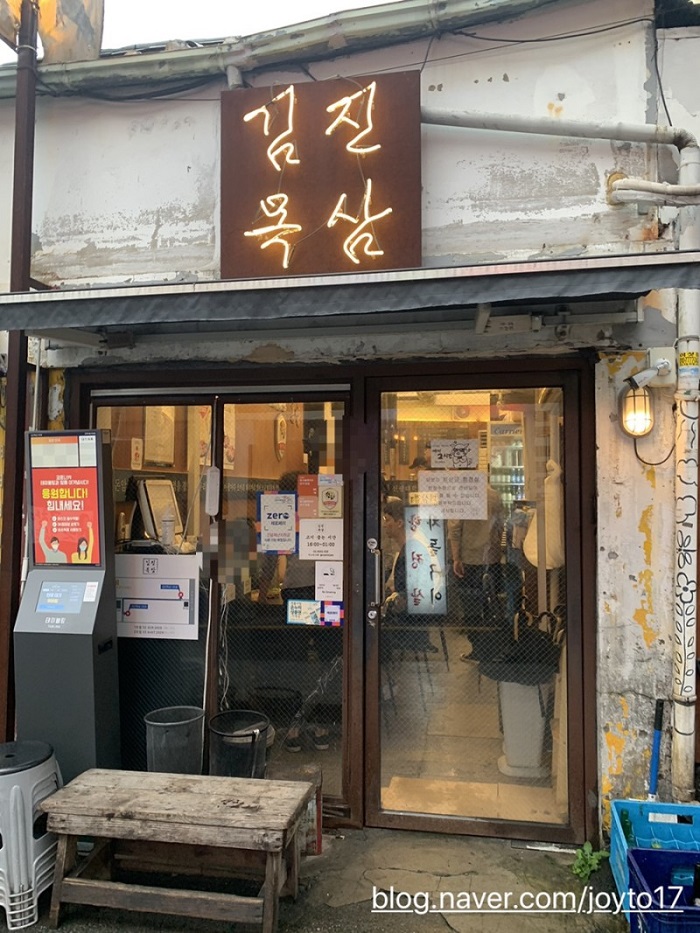
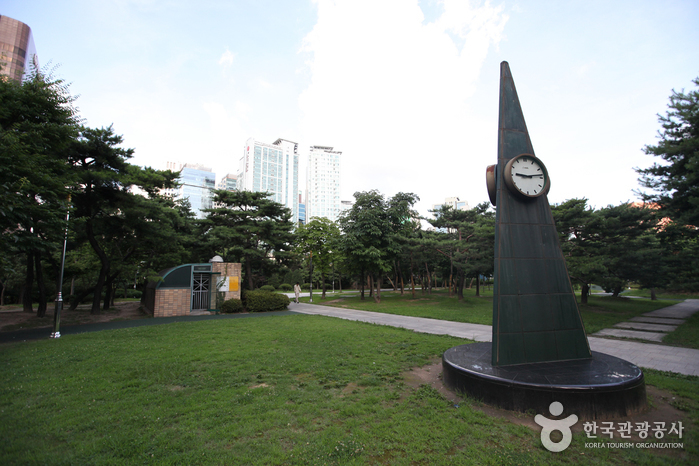
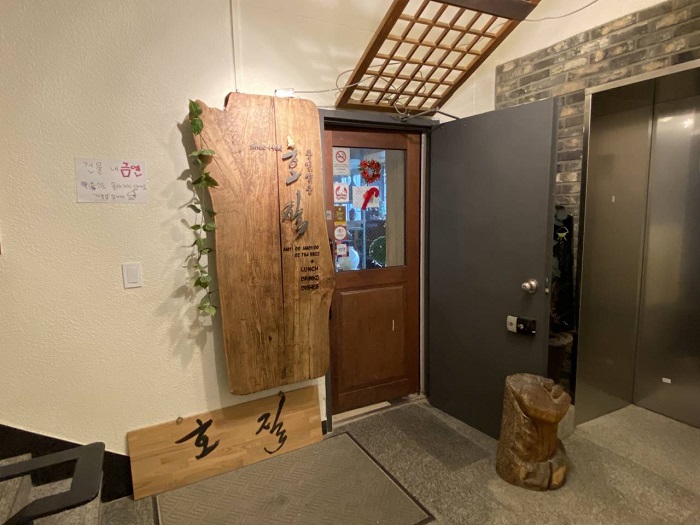
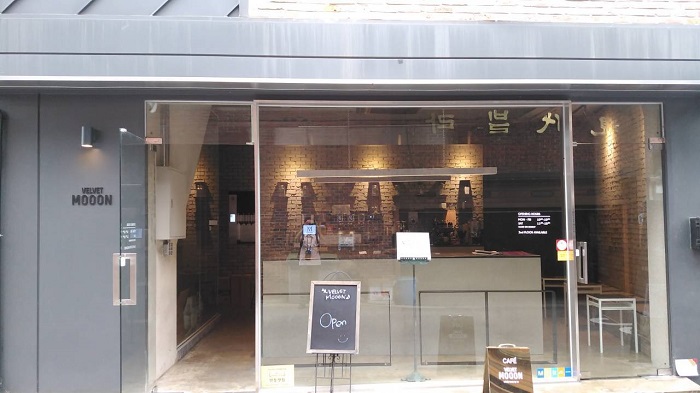
 Français
Français
 한국어
한국어 English
English 日本語
日本語 中文(简体)
中文(简体) Deutsch
Deutsch Español
Español Русский
Русский